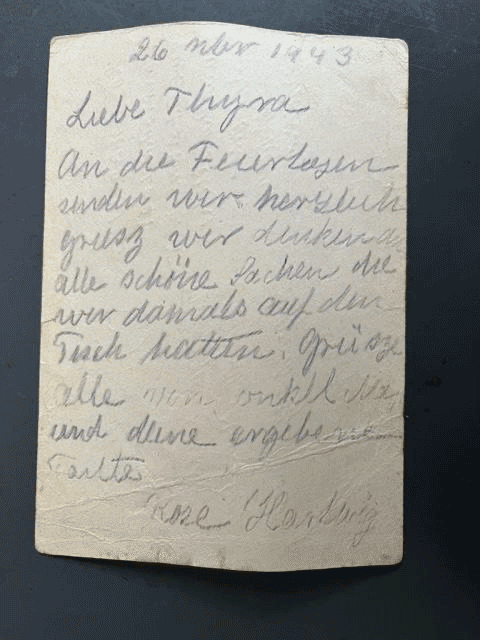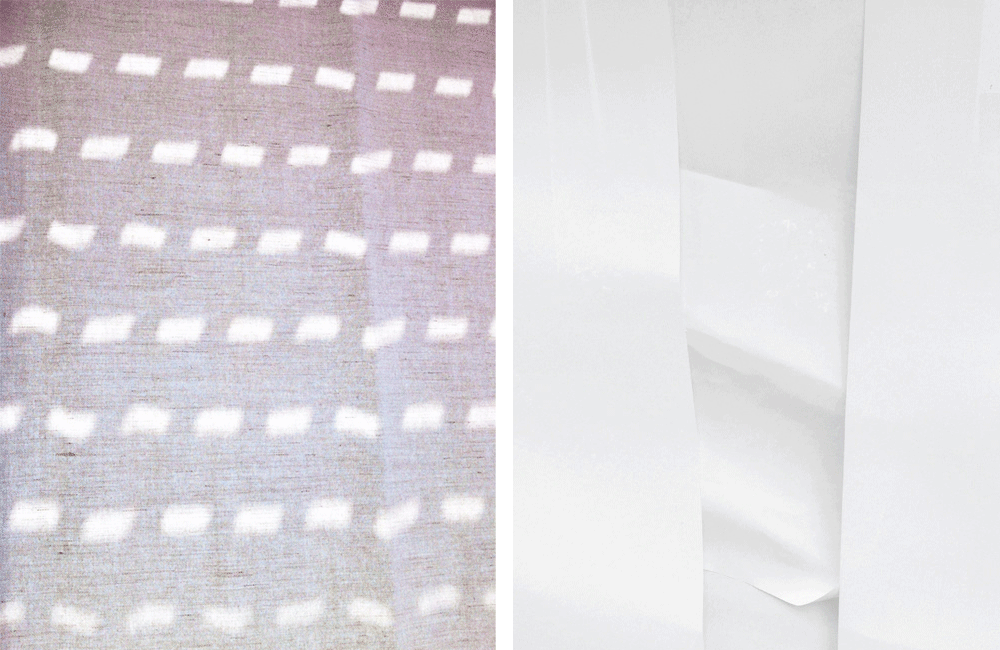A Card Sent from Theresienstadt by Rose Hartwig
from: Denmark’s Forgotten Holocaust: My Family History in Letters
Bodil Jelhof Jensen (Danish to English) Christa Japel (German to English)
Introduction:
In October 1943, Max and Rose Hartwig walked into Theresienstadt along with 200 other Jewish Danes. Billed in Nazi propaganda as a model ghetto to resettle European Jews, Theresienstadt was in fact a transit-stop for the death camps and was itself a death camp housing a crematorium with four ovens.
While Max and Rose languished in the camp, their seven children and their families found refuge in Sweden. From there, they did everything possible to free Max and Rose, sending letters, money and care packages.
When Max left the camp on a Red Cross bus in April 1945, he smuggled out these letters of love and encouragement. Against all odds, most survived the intervening years. The actual letters are reproduced here in their entirety as originally handwritten in German with translations to Danish and English. The editor, Bodil Jelhof Jensen, is a grand-daughter of Max and Rose Hartwig.
The family history is completed with letters written before and after the war, family photos and official documents. Created as events unfolded by the people who were there, this historical record gives a unique insight into the Holocaust. The book presents a story of love and hope, and for most, survival. A touching story of courage about one family in World War II Denmark.
The Letters
While in Theresienstadt, Max and Rose sent and received letters. These were two-sided postal cards without envelopes. The cards, the size of postcards, had to be written in German to satisfy the censors and sent by ordinary mail. Cards written in the camp could only be thirty words in length.
The first letter from Theresientstadt is dated November 26, 1943. It was written by Rose, my mormor (mother’s mother). The last letter to Theresienstadt is dated December 22, 1944. Max left Theresienstadt on April 15, 1945, so any letters written in 1945 probably did not reach him. It is clear from the cancellation stamps on the letters that it could take two or three months for a letter to filter through the system.
The card reproduced below is the only card we have written by Rose. She died in Theresienstadt on February 25, 1944. The immediate cause of death was typhoid. The real cause was starvation. Starving to death in a concentration camp must be the ultimate in food insecurity.
The card’s real importance is how it is written and what it talks about. Posted in November 1943, it is a message to tell the world that Rose and Max are alive and that they are starving. Rose writes awkwardly about the good food they enjoyed at a recent family celebration in Denmark, code for send food. It is written with the stub of a pencil that becomes blunter with each word, until the script is only partially there, a real example of the lack of supplies in the so-called model resettlement camp established by the Nazis at Theresienstadt. Rosa died just before the first care packages with food arrived in Theresienstadt.
The Historical Record, Document 11
From Rose Hartwig
Theresienstadt
To Thyra Bundgaard
Copenhagen, Denmark
Dated November 26, 1943

November 26, 1943
Dear Thyra,
On the holidays, we are sending you our heartfelt greetings. We are thinking of all the wonderful things we had on our plates then. Regards to everyone from Uncle Max and your devoted Aunt.
Rose Hartwig


